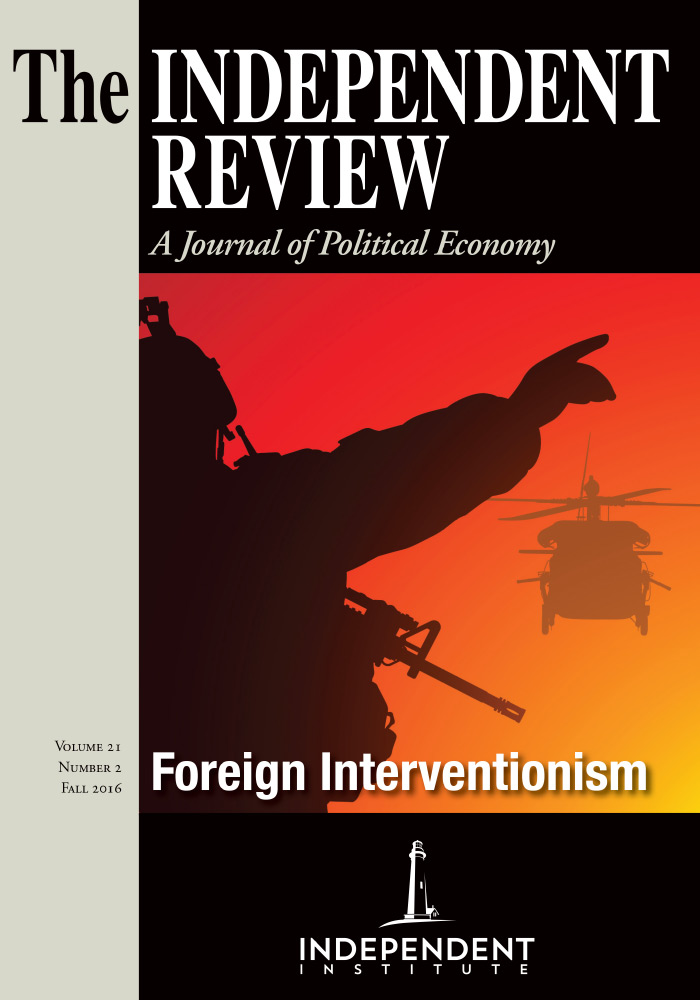Laurie Calhoun’s recent book We Kill Because We Can: From Soldiering to Assassination in the Drone Age examines the emergence and rapid expansion of unmanned aerial vehicles, known colloquially as “drones,” as a tool of U.S. foreign policy. She seeks to address a variety of moral and legal questions surrounding the technology and ultimately argues that the use of drones by the U.S. government should be considered a war crime.
The book is divided into three sections, each referring to one of the three main components of drone operations. The first section, titled “Find,” includes four chapters. This first section begins with a discussion of the lack of public discourse surrounding drones. Calhoun explores the idea of “collateral damage” and more general attitudes regarding the use of drones. She highlights a variety of problems with the current drone program and discusses the inherent differences between drones and other modern weapons.
Calhoun next examines the idea of assassination. Specifically, she points out that “black ops,” or secretive operations, have become standard operating procedure for the U.S. government as opposed to rare undertakings. Unlike previous clandestine operations, these activities are widely acknowledged by top U.S. officials and known to the larger public. She also engages the debate regarding whether terror suspects abroad should be considered military targets and therefore be subjected to the rules of the Geneva Convention.
The following chapter begins with a discussion of how “success” is measured when it comes to drone strikes and discusses how the intelligence used as the basis of many drone strikes is often unreliable. In particular, Calhoun notes that strikes are often ordered based on information from informants. These same informants then report back after a strike has occurred, leading to substantial confirmation bias that “real” terrorists are being killed. She also discusses how drone missions have expanded over the past decade and examines the similarities between drone strikes by the U.S. government and the terror attacks of September 11, 2001.
The second section of the book is titled “Fix.” Its four chapters explore issues in the way drones are currently used. First, Calhoun highlights the problematic way in which the term terrorist is legally defined and argues that the same reasoning could be used to justify practically any murder by the state or an individual. She also contends that drones have normalized extrajudicial killing, noting that the criminal justice system in place within the United States makes it intentionally difficult to convict individuals who pose immediate threats to U.S. citizens. Suspects are innocent until proven guilty beyond a reasonable doubt in order to ensure that innocent people are not falsely convicted. Under the current regime of drone warfare, however, Calhoun argues, individuals who cannot feasibly pose an immediate danger to the United States are summarily executed without any sort of trial.
Calhoun next discusses the differences between drone operators and other types of military personnel. She boldly argues that drone operators act as cowards, sitting safely out of danger as they hunt their targets. She examines the memoirs and statements of several drone operators, discussing the mindset of military personnel engaged in unmanned operations.
The final section of the book, “Finish,” contains an additional four chapters and is followed by a conclusion and postface. These chapters include discussions regarding the outcome of drone policy abroad. In particular, Calhoun discusses the politics behind the current drone program, arguing that the political structure in which drones are created and used leads to perverse outcomes. She explores the costs of drones in terms of both money and the hiring of private contractors to engage in military activity. She contends that the end of the military draft combined with other forces has created general apathy toward conflict. Drones, she argues, help to weaken the moral compass of both soldiers and citizens. The final chapter argues that the U.S. drone program is effectively counterproductive. As opposed to spreading democracy via the global war on terror, the drone program sabotages democracy, increases the number of terrorists, and exemplifies tyranny.
The topic of drones is timely and relevant for anyone interested in military affairs, political science, economics, or public policy. Calhoun’s bold assertions throughout the work will likely engender intense support from critics of the drone program and sharp rebuke from its defenders. Although the book offers a much-needed critical perspective on the issue of drone strikes, I was underwhelmed by what it offered, and I doubt that proponents of the drone program will find the book convincing. In the introduction, Calhoun discusses the idea that the expanded use of drones has removed the “human factor” from many military operations. She argues that the drone program moves far beyond an attempt to protect military personnel and is instead a tool of indiscriminate killing. She also points out, correctly, that the debate over drones within the United States has been minimal. Given these claims, I anticipated an in-depth analysis of U.S. drone policy—its history, its inception, an explanation for its rapid expansion, and a discussion of the consequences of such a program. Such an analysis never materialized.
Overall, the book has three key weaknesses. First, throughout the book, Calhoun looks to compare and contrast previous methods of war with the use of drones. Although this method may potentially demonstrate the radical differences between “standard” warfare and drone warfare, Calhoun’s treatment is lopsided and lacks critical depth. In many places, the text veers off to a discussion of previous conflicts and foreign-policy methods for paragraphs or pages, only to return very briefly to the subject of unmanned aerial vehicles. The inclusion of drones in some places reads almost like an afterthought as opposed to the central focus.
Second, the book provides no framework for thinking about drone technology and its use. The book’s opening chapter jumps immediately to the first known lethal drone strike in 2002 and discusses the reaction from media, government, and the larger populace. Although it is indeed interesting to note the overwhelmingly positive reaction to drone use by individuals within the United States, it is unclear why we should observe this reaction or how it is different from past reactions to new technology. Here, Calhoun misses an opportunity to examine the erosion of critical checks and balances on government intervention and the evolution of the sordid relationships between drone manufacturers, Congress, and the Department of Defense (DOD). Such an analysis would not only bolster her claim that drones are different than other weapons but also offer readers much needed context. On several occasions, Calhoun points out that the Central Intelligence Agency (CIA) rather than the DOD oversees many drone operations. Here again, some sort of framework and additional supporting material would make the argument much stronger. What Calhoun attempts to argue is that CIA drone strikes are more clandestine and subject to less oversight than DOD operations. What she fails to discuss is the distinction between Title X (military) operations and Title 50 (covert) operations. This distinction has received a great deal of attention. Title X operations are subject to significant oversight, whereas Title 50 programs are significantly less monitored. Thus, as military and intelligence activities have become more integrated, there is a strong incentive to place operations under CIA jurisdiction. Given the widespread debate over this issue and its direct applicability to the book, its omission is unfortunate.
The third major weakness of the book is the lack of data. Anyone who has studied the development or use of drones would undoubtedly claim that data are scarce. This is certainly true. The secretive nature of the U.S. drone program, combined with the fact that strikes most often occur in contested and hostile areas, means that data can be elusive. That said, Calhoun misses the chance to strengthen her argument by including the data that are available. For example, she argues that drone strikes cause “collateral damage,” or the death of innocent civilians, yet she fails to provide any comprehensive data on these deaths despite the fact that some, albeit imperfect, data are available. Other data regarding the monetary cost of drones and the effects of drone operations on communities, families, and even drone operators have been explored elsewhere (see, for example, Abigail R. Hall, “Drones: Public Interest, Public Choice, and the Expansion of Unmanned Aerial Vehicles,” Peace Economics, Peace Science, and Public Policy 21, no. 2 [2015]: 273–300; Seth G. Jones and Martin C. Libicki, How Terrorist Groups End: Lessons for Countering al Qa’ida [Santa Monica, Calif.: RAND Corporation, 2008]).
These issues are particularly problematic if Calhoun hopes, and it appears she does, to sway those who favor current drone operations abroad.Without a framework for understanding drone use, necessary supporting detail, and data, the work lacks the necessary analytical teeth. Overall, although the book may provide a unique critical perspective of the drone program and offer up many possible topics of debate, those looking for a detailed analysis of the drone program and its consequences are likely to be disappointed.
| Other Independent Review articles by Abigail R. Hall | ||
| Spring 2023 | How to Run Wars: A Confidential Playbook for the National Security Elite | |
| Fall 2021 | Militarized Extremism: The Radical Right and the War on Terror | |
| Summer 2021 | Walter E. Williams: Scholar, Teacher, and Public Intellectual | |
| [View All (9)] | ||


















